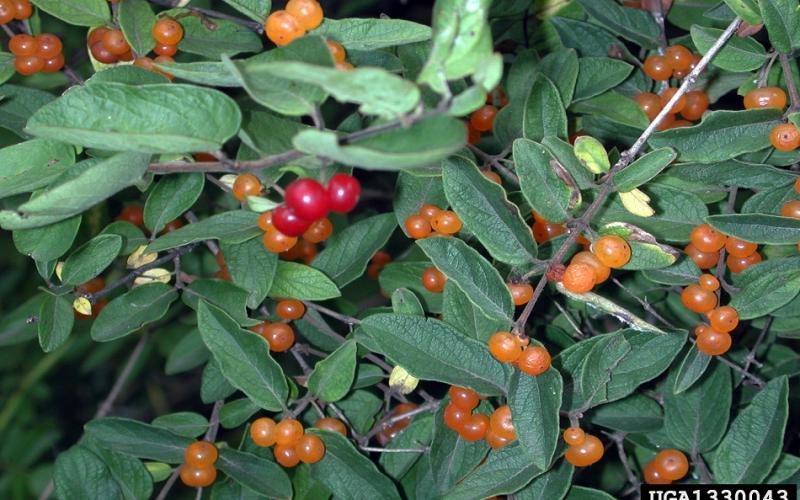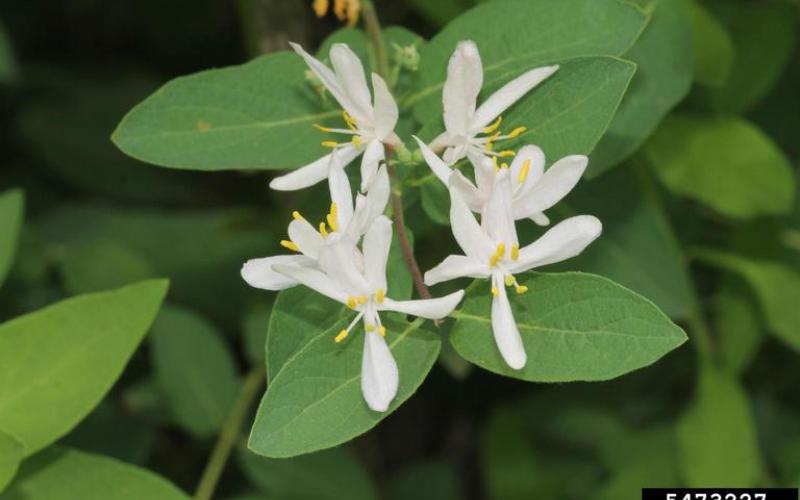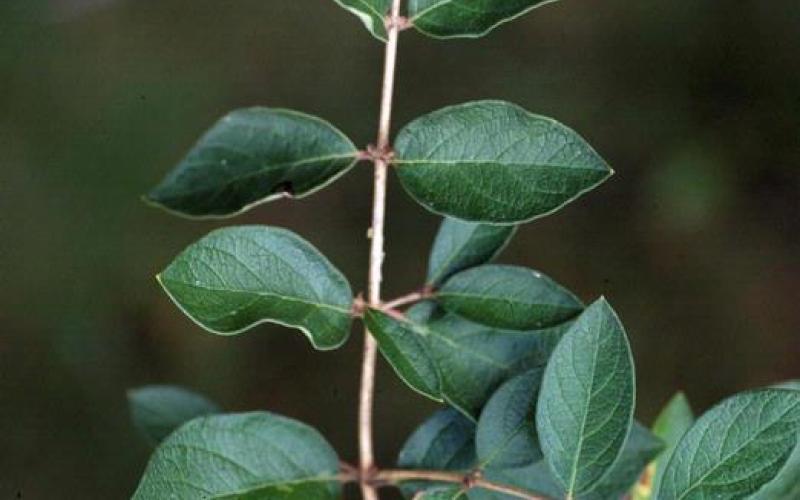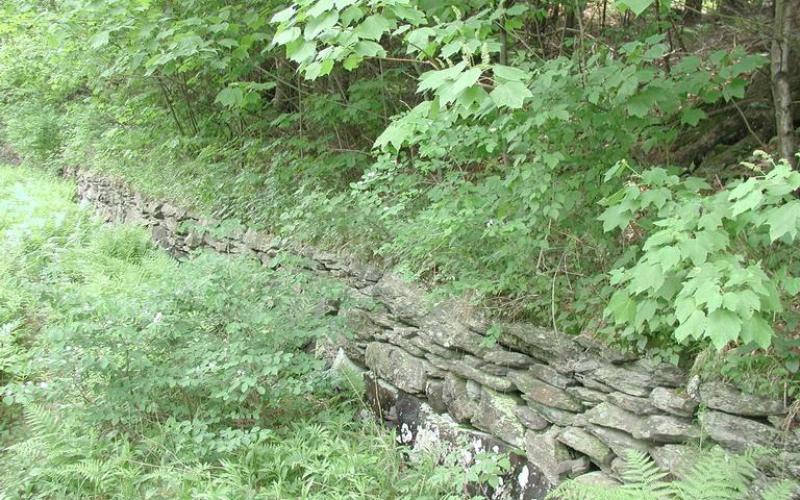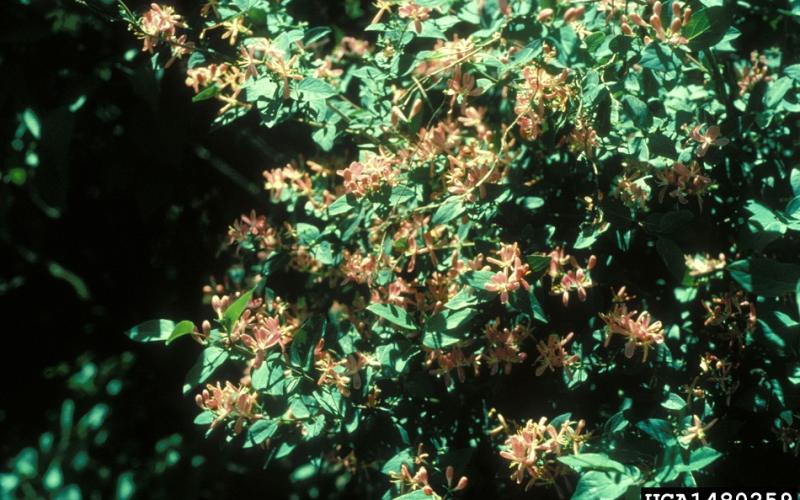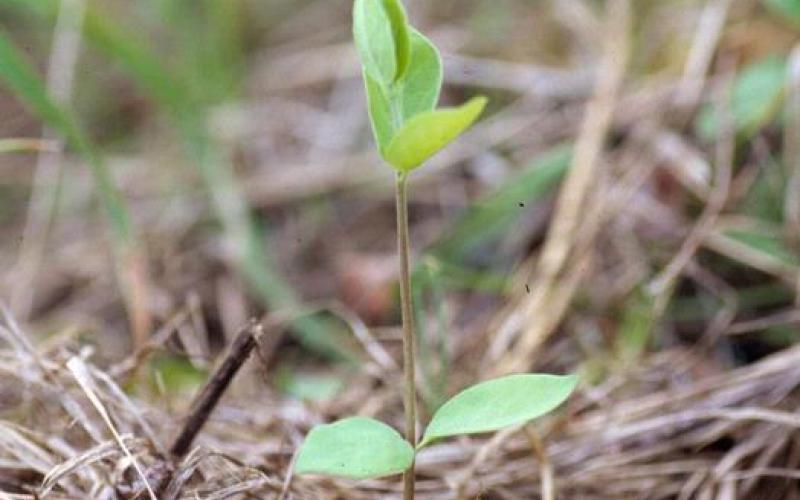Common Name: Tatarian Honeysuckle
Scientific Name: Lonicera tatarica L.
Legal Status
Propagation and sale of this plant are prohibited in Minnesota. Transportation is only allowed when in compliance with Minnesota Statute 18.82. Although Restricted Noxious Weeds are not required to be controlled or eradicated by law, landowners are strongly encouraged to manage these invasive plants on their properties in order to reduce spread into new areas.
Background
Tatarian honeysuckle is native to eastern Asia. It was introduced to the U.S. in the 1700s as an ornamental. It has since spread and naturalized in the Eastern and Midwest United States. It is established in most of the counties in Minnesota.
Description
- Tatarian honeysuckle is a multi-stemmed, deciduous shrub, growing to 10 feet tall. It can be easily confused with similar species like Bell’s, Morrow’s or Amur honeysuckles, all distinguished by slight differences in flower color and leaf pubescence. See the Minnesota Department of Transportation guide for comparisons of various honeysuckle.
- Leaves are opposite, oval, smooth, 1.5- 2.5 inches long, and blue-green. Leaves may be hairless or downy. Leaf-out is slightly earlier in spring than native species and leaf-drop is slightly later in the fall.
- Flowers are tubular, paired, borne along the stem at leaf axils, and usually pink to red, rarely white. Bloom time is May to June.
- Fruits are paired, spherical, red to orange berries, each containing several seeds.
- The root system is shallow and fibrous.
- Mature stems are hollow. Bark is light gray, and shaggy or peeling. Young stems are slightly hairy and light brown.
Habitat
Tatarian honeysuckle invades and thrives in woodlands, roadsides, mature and disturbed forests, savannas, fence rows, meadows, old fields, and pastures. It can grow in full sun to shade, and moist to dry, gravelly, or sandy soils.
Means of spread and distribution
Tatarian honeysuckle reproduces asexually by root suckering and layering. The main method of spread to new sites is through seed dispersal by birds. Tatarian honeysuckle produces abundant seeds which are vectored by birds and mammals.
It is documented in most of the counties of Minnesota, and is fairly widely distributed.
Impact
High densities of honeysuckles can suppress native plant and timber regeneration and form monocultures. Ecosystem richness and density of tree seedlings are substantially reduced in honeysuckle infestations. This species can alter a habitat’s microclimate, by creating dense shade, depleting soil moisture and nutrients, and possibly releasing allelopathic chemicals that inhibit growth of other plants. It can be especially harmful to spring ephemerals, due to its early leafing.
Prevention and management
- Once established, Tatarian honeysuckle is difficult to control. For all management options, infestation sites will need to be monitored and treated repeatedly for 3- 5 years until the seedbanks and suckers are depleted.
- Do not plant invasive honeysuckle species as an ornamental and eradicate existing plants on your property. There are native species which can be planted as alternatives, you can find a list of them in the MIPN Landscape Alternatives brochure.
- Young plants can be pulled by hand. Mature plants can be removed by using a weed wrench tool or by repeated cutting. Keep in mind that physical removal in this manner can disturb soils and result in reinvasion or resprouting of honeysuckles and other exotics.
- Prescribed burning can be an effective tool to control infestations in combination with other techniques. Spring burning will kill seedlings and the tops of mature plants. Make sure to contact the Minnesota Department of Natural Resources to learn more about control burning practices and regulations.
- Foliar, stem injection, and cut-stem application of herbicides that translocate their active ingredients into the root system can be very effective. Treatments will need to be repeated for several years to eradicate a population. If using herbicide treatments, check with your local University of Minnesota Extension agent, co-op, or certified landscape care expert for assistance and recommendations. There are several businesses throughout the state with certified herbicide applicators that can be hired to perform chemical applications.
